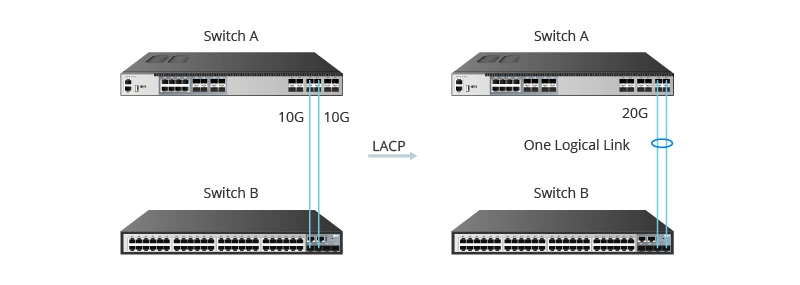In the world of computer networking, it’s crucial to keep data flowing smoothly and without interruption. Whether it’s for personal use or in a business environment, a stable connection is paramount. Two common methods for enhancing network performance and reliability are Dual-Wide Area Network (Dual-WAN) and Link Aggregation. While they may seem similar, they serve different purposes, and understanding these differences can help you make an informed decision for your specific networking needs.
What is Dual-WAN?
Dual-WAN is a method that involves the use of two or more Wide Area Network (WAN) connections simultaneously. By employing multiple connections, Dual-WAN provides a level of redundancy that can prevent network downtime.
Increased Reliability
If one internet connection fails, the other can automatically take over, ensuring that there’s no interruption in service.
Load Balancing
Some Dual-WAN setups enable load balancing, which can distribute traffic evenly across both connections, potentially increasing overall performance.
Potential Limitations
While Dual-WAN does offer increased reliability, it may not significantly boost the speed if the connections are not balanced properly.
What is Link Aggregation?

Link Aggregation, on the other hand, involves combining multiple network connections to function as a single link. This method typically involves LAN (Local Area Network) connections rather than WAN.
Enhanced Bandwidth
By utilising several links at once, Link Aggregation can significantly increase the available bandwidth, offering higher data transfer rates.
Improved Redundancy
Like Dual-WAN, Link Aggregation also provides a redundancy feature. If one link fails, the others continue to function, minimizing the risk of network downtime.
Configuration Complexity
It’s essential to understand that setting up Link Aggregation can be more complex and requires compatible hardware and careful configuration.
Dual-WAN vs Link Aggregation: Choosing the Right Solution
When deciding between Dual-WAN and Link Aggregation, one must consider the specific needs and environment.
For Reliability and WAN Redundancy
If your primary concern is reliability and WAN redundancy, Dual-WAN may be the more suitable choice.
For Increased LAN Bandwidth
If you are looking to enhance LAN bandwidth and can handle more complex configurations, Link Aggregation would likely be the better option.
Conclusion
Both Dual-WAN and Link Aggregation have their unique advantages and potential limitations. Dual-WAN offers a simple solution for enhancing reliability through WAN redundancy, while Link Aggregation can significantly boost LAN bandwidth. By understanding these concepts, you can make an informed decision tailored to your networking needs, ensuring a smooth and stable connection for all your devices.

